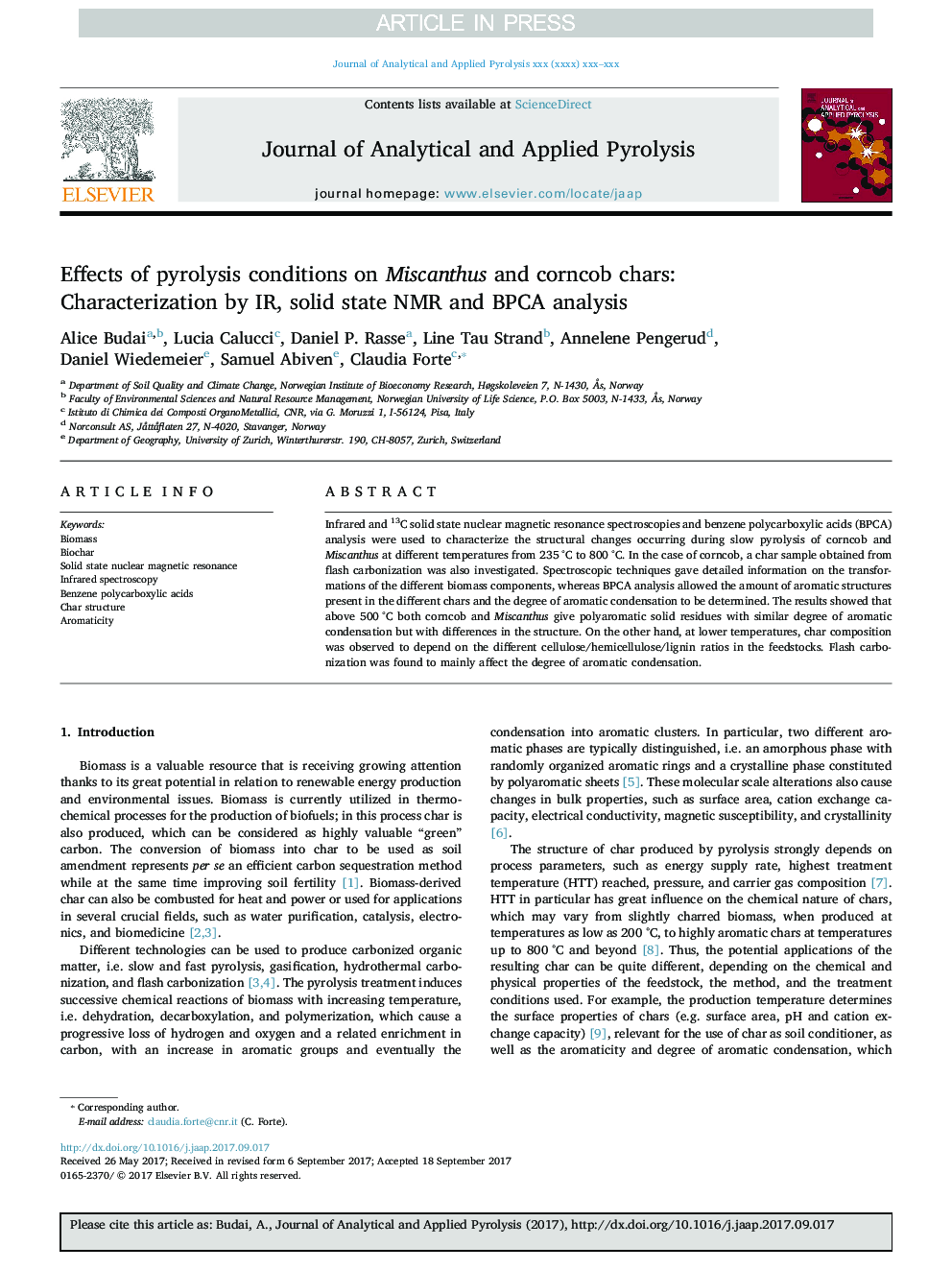| Article ID | Journal | Published Year | Pages | File Type |
|---|---|---|---|---|
| 7606539 | Journal of Analytical and Applied Pyrolysis | 2017 | 11 Pages |
Abstract
Infrared and 13C solid state nuclear magnetic resonance spectroscopies and benzene polycarboxylic acids (BPCA) analysis were used to characterize the structural changes occurring during slow pyrolysis of corncob and Miscanthus at different temperatures from 235 °C to 800 °C. In the case of corncob, a char sample obtained from flash carbonization was also investigated. Spectroscopic techniques gave detailed information on the transformations of the different biomass components, whereas BPCA analysis allowed the amount of aromatic structures present in the different chars and the degree of aromatic condensation to be determined. The results showed that above 500 °C both corncob and Miscanthus give polyaromatic solid residues with similar degree of aromatic condensation but with differences in the structure. On the other hand, at lower temperatures, char composition was observed to depend on the different cellulose/hemicellulose/lignin ratios in the feedstocks. Flash carbonization was found to mainly affect the degree of aromatic condensation.
Keywords
Related Topics
Physical Sciences and Engineering
Chemistry
Analytical Chemistry
Authors
Alice Budai, Lucia Calucci, Daniel P. Rasse, Line Tau Strand, Annelene Pengerud, Daniel Wiedemeier, Samuel Abiven, Claudia Forte,
